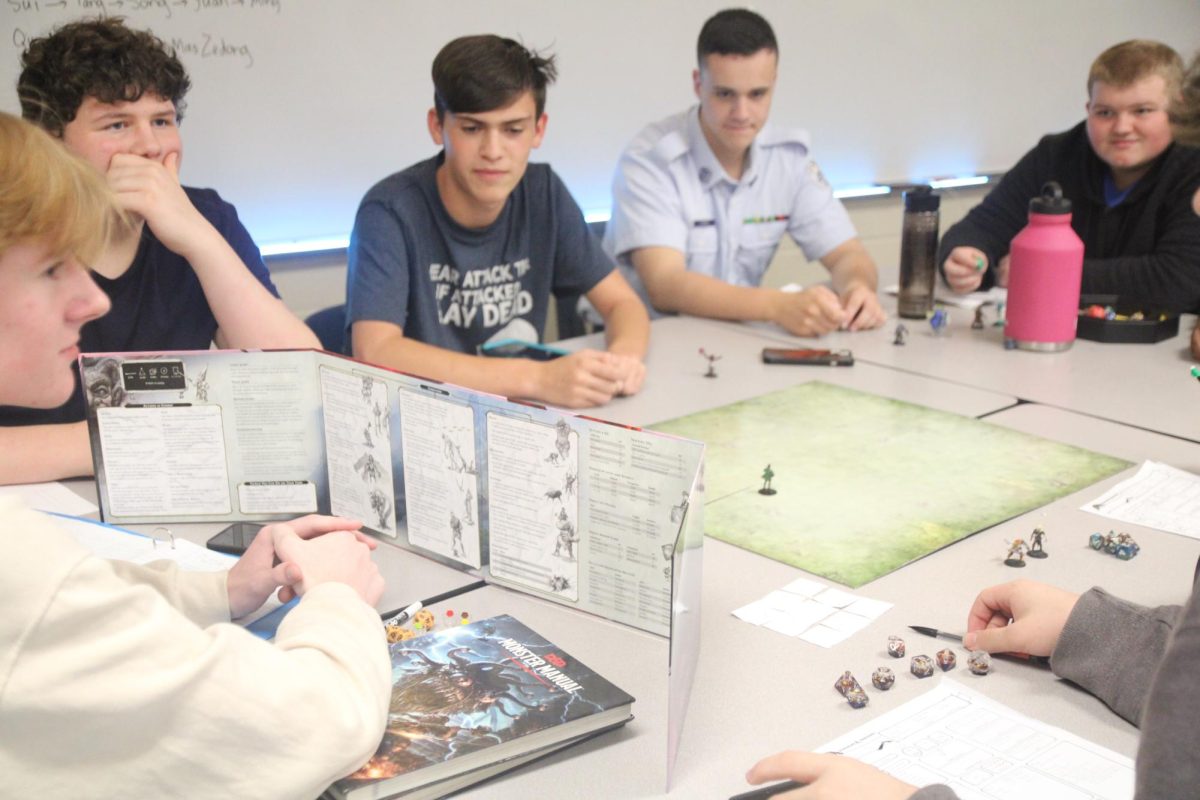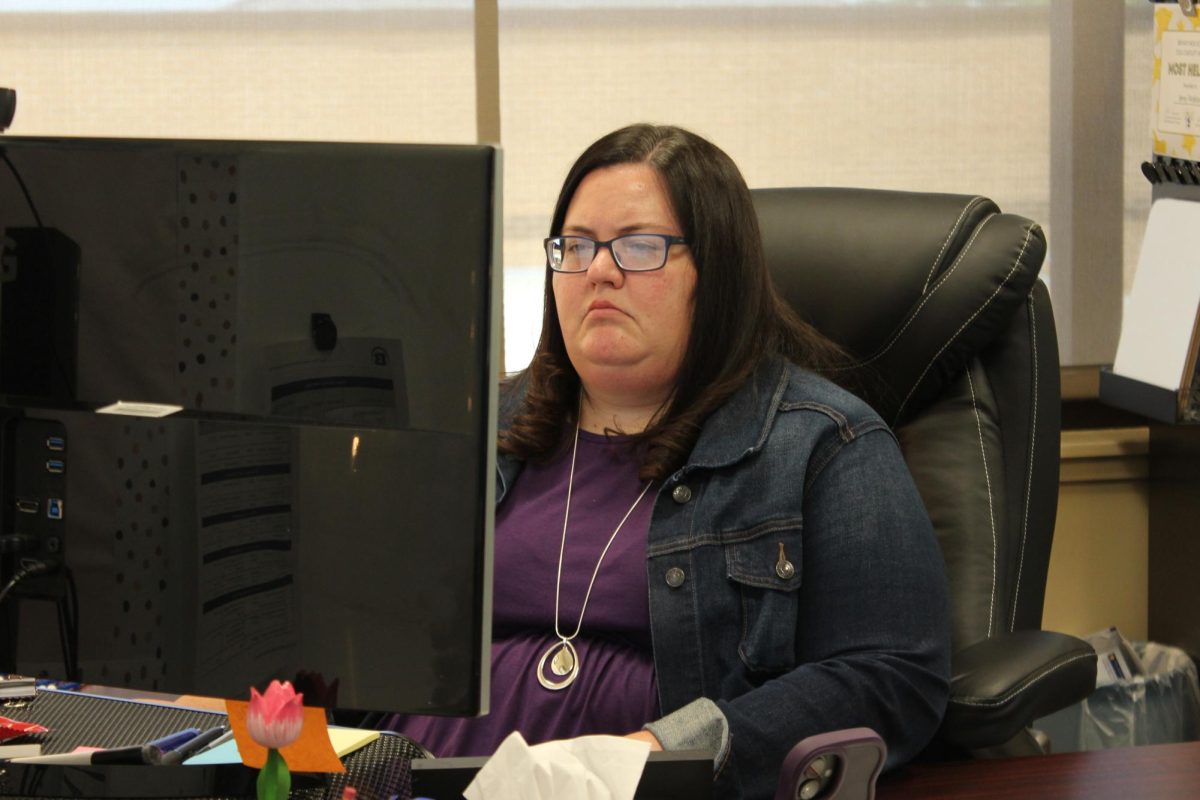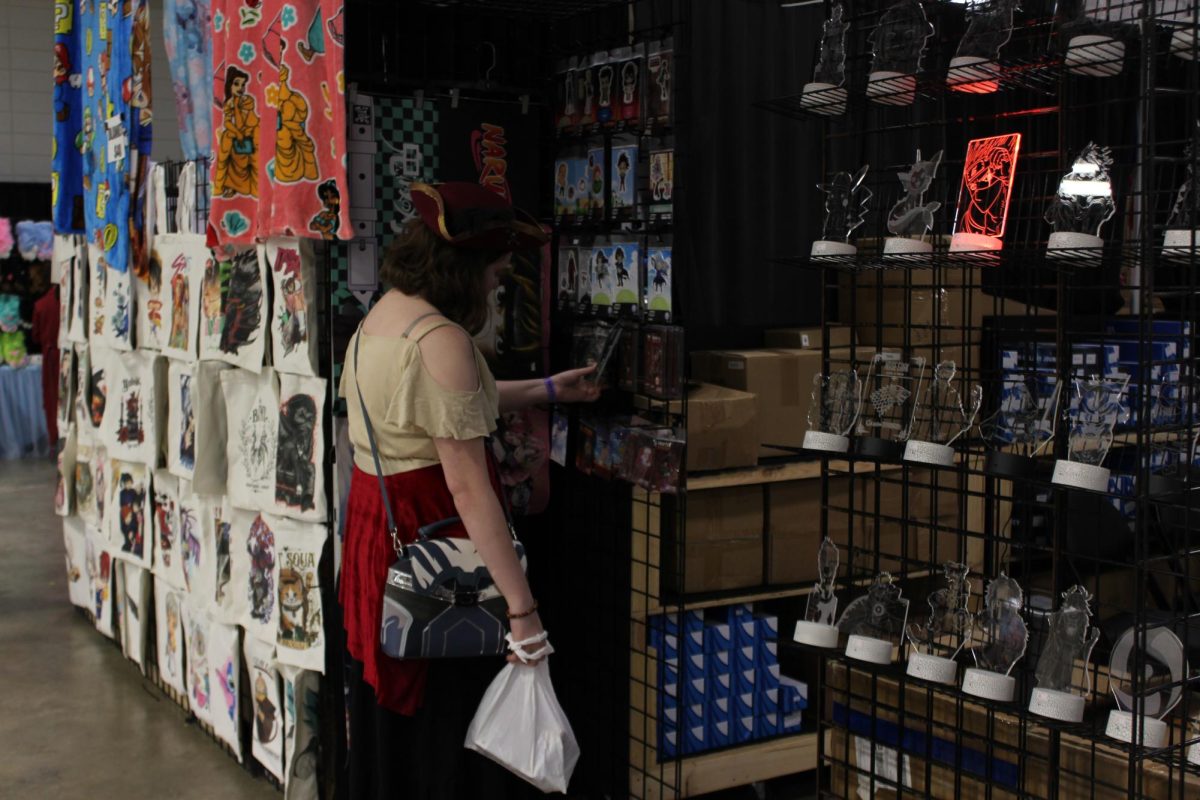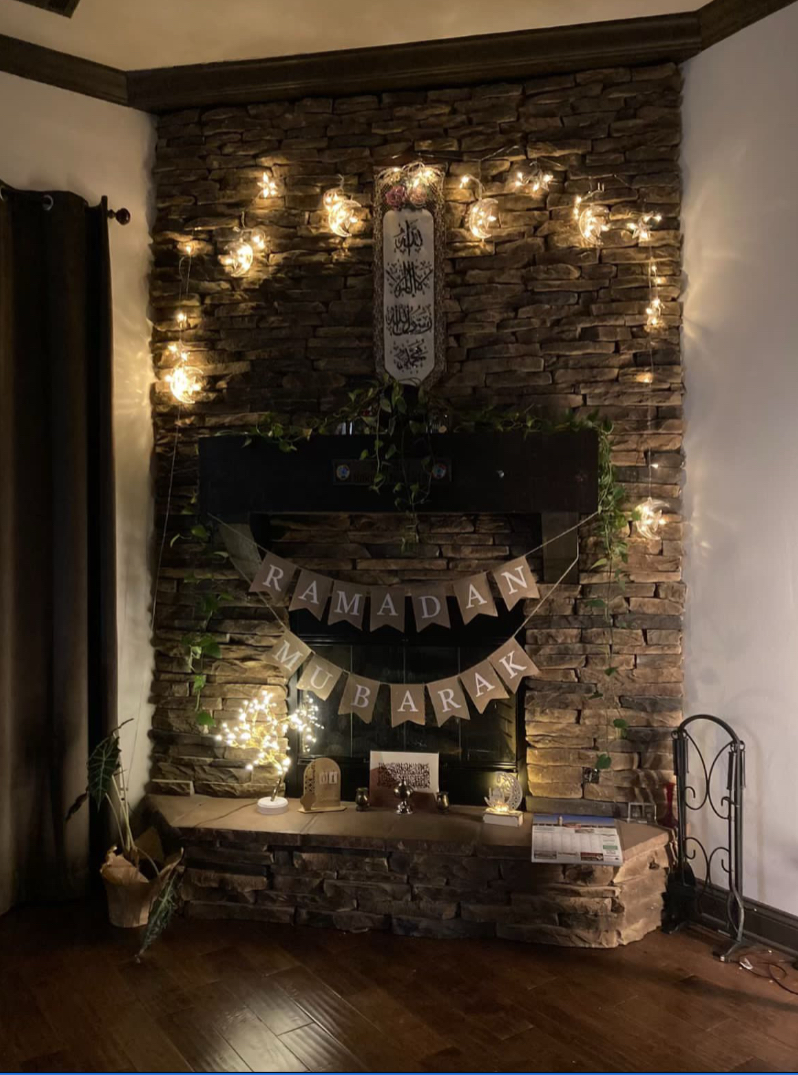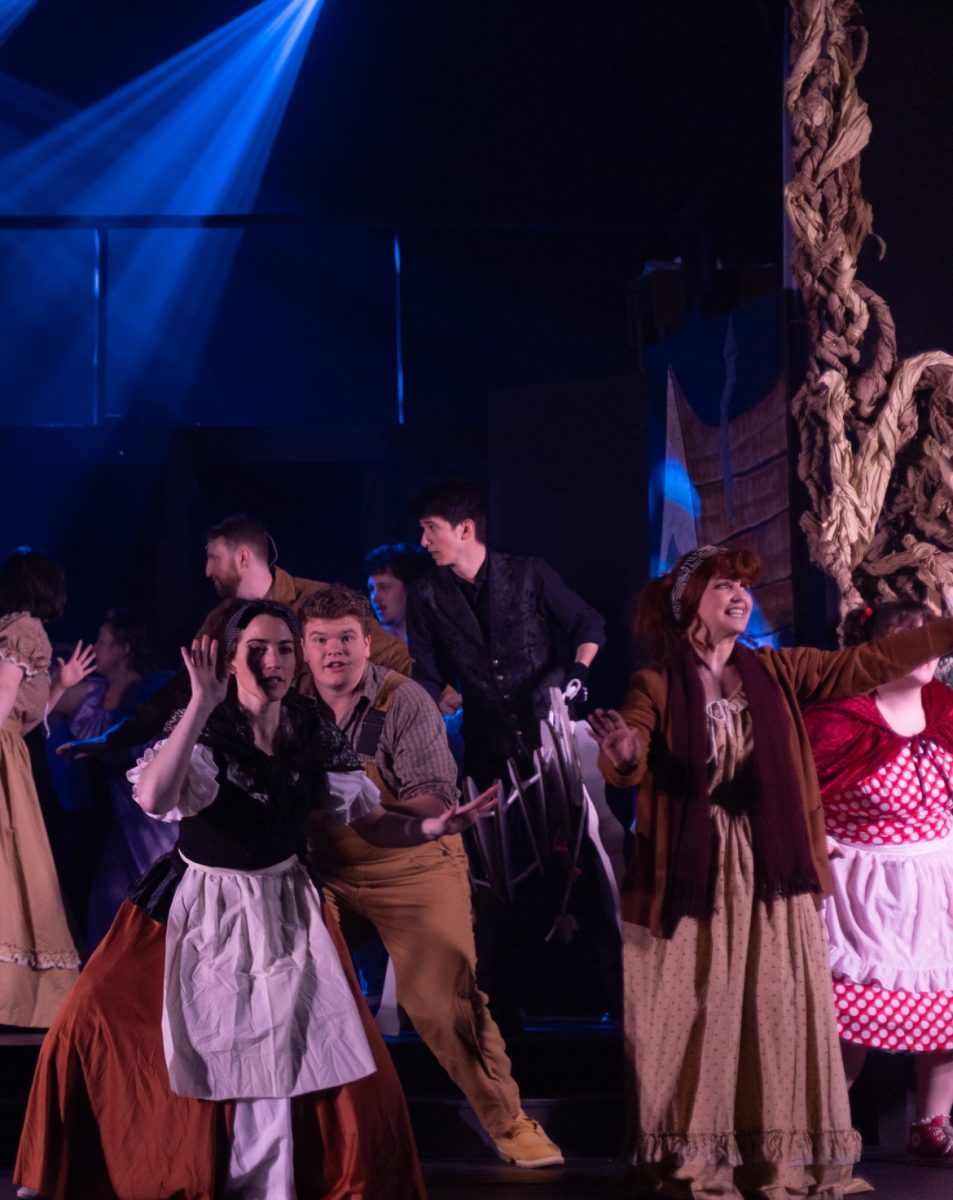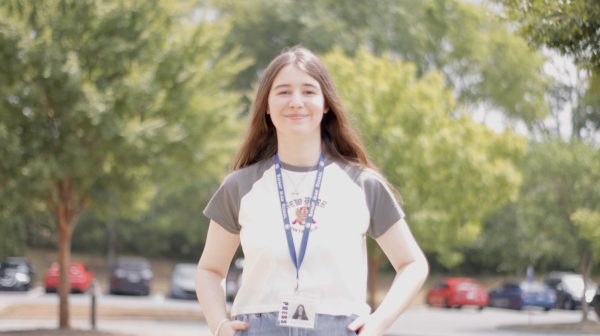By the roll of the dice, each player – along with their designed character – waits in great suspense for the adventure that soon awaits them. Perhaps they could soon be attempting to convince someone that they are king of all pufferfish, or maybe they’ll be too busy fighting against a goblin. In whatever the case, Dungeons & Dragons has brought great enjoyment to those who like thinking outside the box.
Senior John Bennett says after he learned about the club’s development last school year, he was excited to be a part of BHS’s D&D club.
“I have [dealt] with D&D in the past, but I never really did anything over a long period of time because there was no one really to play with that I knew – at least no one close by – so this is my only real big way to do that and it’s a fun experience.” Bennett said. “I’ve been doing this […] for about a year, more a semester.”
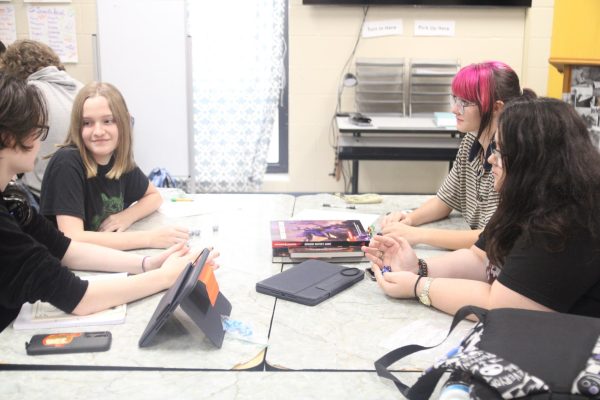
What is D&D?
Dungeons & Dragons, also referred to as D&D, is a collaborative story-telling game originally designed by game designers Gary Gygax and Dave Arneson in 1974. The purpose of the game, according to the official Dungeons & Dragons website, is to create a story where [the players’] bold adventurers confront deadly perils. The goal of the game is to tell a well-crafted story that is up to the imagination of its players.
Meghan Pope, who has been teaching at Bryant for six years and has been playing D&D since 2010, was the one to offer the D&D Buzz Times. Pope describes D&D as a roleplaying game that is heavily reliant on the player’s decisions, possible choices allowed by a player’s dice roll and the choices made by the Dungeon Master (D&D’s lead storyteller who decide the rules of the game, and they’re often described as the Game Master for D&D).
“You need at least three players but a typical good-sized group is anywhere between four-eight, including the Dungeon Master.” Pope said. “Sometimes more than that if your Dungeon Master [or] Game Master is brave enough to organize that many! From there, the Dungeon Master either creates their own story lines or uses one that was premade for the players to follow.”
Pope details how character creation in D&D is unique and up to the decisions made by the player.
“It can be any fantasy race that your Dungeon Master approves of,” Pope said. “{Examples can include] Dwarves, Elves, Halflings, Gnomes, Satyrs, Owl Bears, the list goes on. Then players choose their class for their character, which can be anywhere from a beefy class like a fighter or barbarian, a squishy class like a wizard, a sneaky character like a rogue, or rangers or druids, there are tons to choose from!”
Pope additionally mentions how not all D&D stories are predictable.
“Sometimes players follow the story put forth pretty well,” Pope says. “Other times the Dungeon Master has to come up with crazy interactions on the fly because the players chose to do something that they were entirely unprepared for. In my experience, that is typically how it goes!”
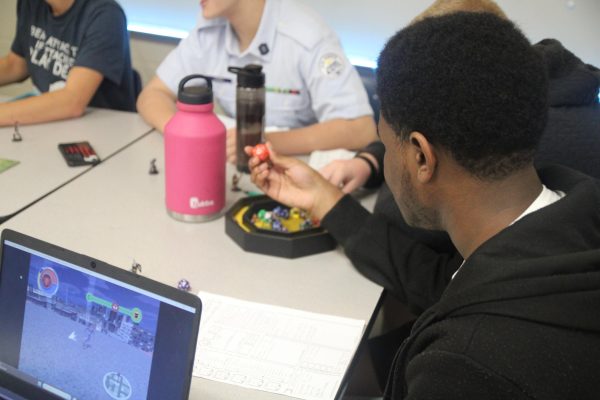
An Outlet for Creativity and Relaxation
With such a vast outlet for creativity, D&D has inspired students to further their creative passions.
Sophomore Audrey Smart says she was interested in D&D and decided to participate in the BuzzTime sessions offered by Pope to learn more about D&D and strengthen her creativity as an artist.
“I love to design and create characters and it’s something I’ve been really passionate about ever since I’ve started doing art,” Smart said. “Just being able to have something to start out with – because that’s really hard when it comes to character design ”
Smart also claims that D&D can be a good way for students to destress from real responsibilities most high schoolers face.
“It’s an outlet to rest and relax and let you express what you’re interested in,” Smart said. “I think that’s really important in high school because you have so much work and you have so many responsibilities now, you know. […] And just being able to relax and enjoy free time is something that’s really important to not get too stressed and overwhelmed. ”
Pope says that D&D, while a good way to decompress from the everyday stresses of life, is also a good way for players to expand their minds..
“In a day and age where we are so engrossed in cell phones and social media, not nearly as many people are left to use their imaginations to help occupy their time like we did when we were kids,” Pope says, “I think [D&D] also fosters communication skills, team work, and problem solving. If you are a player in a large party, you have to be able to work through combat with or sometimes tricky situations with others where [these skills] are key.”
Smart mentions that D&D is a creative way to explore storytelling.
“Even if you don’t necessarily want to play the game, just creating the characters and learning the systems is the fun part.” Smart said. “That’s the main thing with D&D: it’s storytelling and how your characters would react in those situations, and it really makes you think. It fuels that creativity, not just with character design, but with storytelling.”
With offering D&D BuzzTimes sessions and after school meetings, Pope says she greatly enjoys helping students learn D&D.
“I love that Dungeons & Dragons is inclusive and super creative,” Pope said. “It actively engages your imagination and creativity. I love helping students create new characters and just watching them enjoy playing with their peers and occasionally playing with them!”


